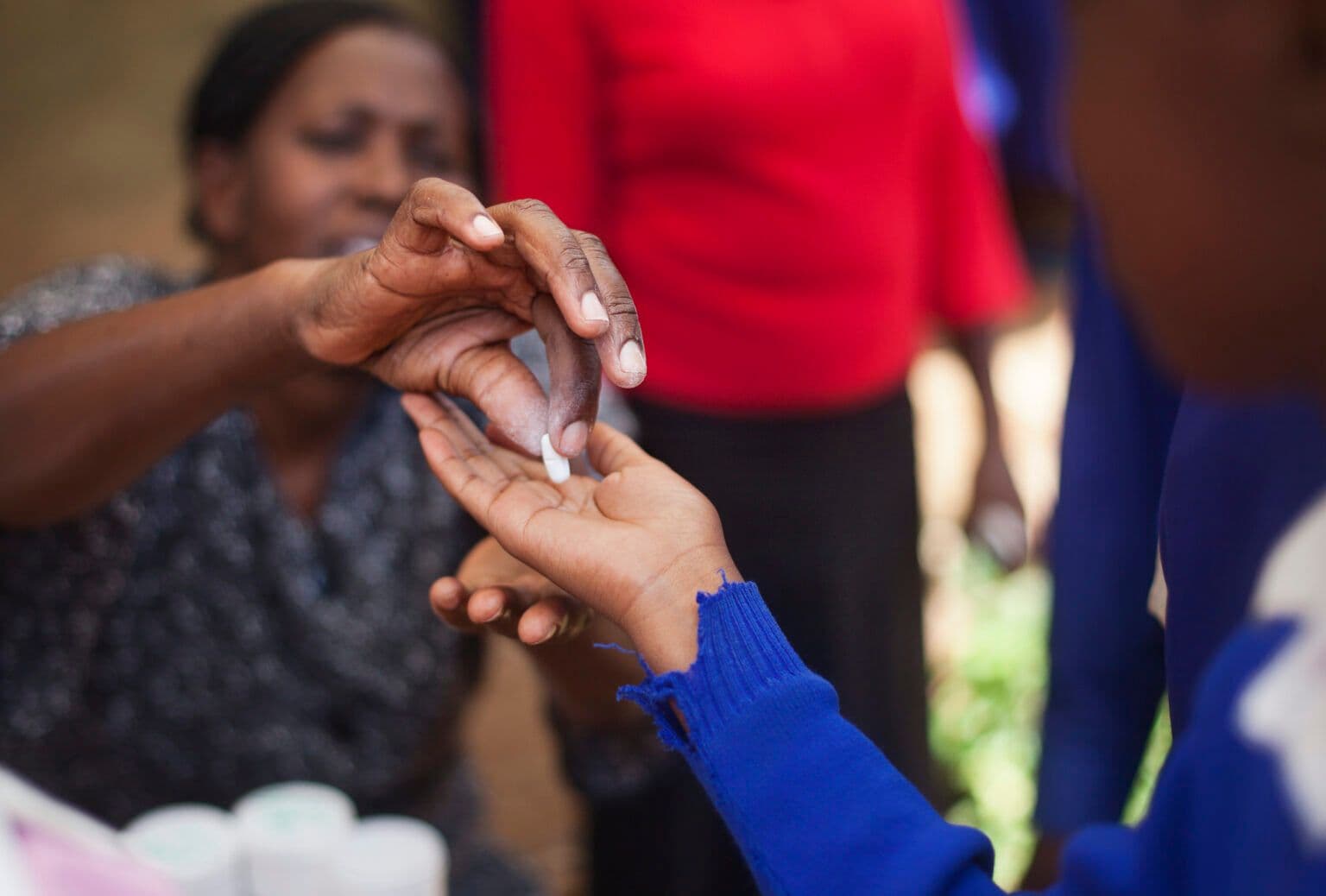Evidence Action’s Deworm the World Initiative

▲ Photo by Evidence Action DtWI
Evidence Action’s Deworm the World Initiative supports government-run deworming programs in schools through a combination of advocacy, practical support, and evaluation.
What is the problem?
More than a billion people suffer from parasitic intestinal worm infections. Two particularly common afflictions are schistosomiasis and soil-transmitted helminthiasis. Schistosomiasis is transmitted through water contaminated with the larvae of a parasitic worm, and affects roughly 206 million people.1 Soil-transmitted helminthiasis is transmitted through faeces and soil, and affects 1.5 billion people worldwide.2 Children living in severe poverty and without adequate access to sanitation are especially at risk, and there is evidence that worms negatively impact their development and reduce the income they earn later in life.3
What do they do?
The Deworm the World Initiative is run by Evidence Action. Evidence Action is focused on identifying and scaling-up evidence-based and cost-effective interventions. Since 2007, they have advocated for and supported the implementation of government-run deworming programs for preschool and school-age children in India, Kenya, Nigeria, and Pakistan. They focus on mass drug administration programs, as deworming medication is sufficiently cheap (between $0.34 and $1.52 per treatment) to make it cost-effective to distribute the drugs to all children within a geographical area, rather than testing and targeting individuals. These mass drug administrations target soil-transmitted helminthiasis, but also include treatment for schistosomiasis where needed.
Deworm the World’s work varies according to what the partnering government needs, and may include:4
- Advocacy - building relationships with governments and advocating for conducting mass drug administration.
- Prevalence studies - to identify areas of need and to assess impact.
- High-level program planning - e.g. developing government treatment strategy.
- Drug procurement - e.g. supporting governments to submit requests for deworming drugs to the World Health Organization.
- Program preparation - training and distribution of materials.
- Community awareness - e.g. through text message campaigns, organized public announcement events, and editing mass media materials to be more appropriate for local contexts.
- Monitoring and evaluation.
Why do we recommend them?
- GiveWell, our research partner in global health and development, recommends Deworm the World Initiative as one of the most cost-effective global development organizations in the world.
- There is strong evidence that administration of deworming drugs reduces worm loads.
- There is some evidence that reductions in worm loads lead to improved life outcomes.
We believe that as of March 2023 Deworm the World has room to spend an additional $1.4 million dollars in their most cost-effective regions in the next three years (2023-2026). $0.8 million of this is in Nigeria, $0.4 million in India and $0.2 in Kenya.
More resources
- GiveWell write up on Evidence Action’s Deworm the World Initiative
- GiveWell review of the evidence for Deworming
- Founder Pledge report on Deworming
- Evidence Action’s website
Notes
-
World Health Organization. (2020). Soil-transmitted helminth infections. Who.int. Retrieved 18 February 2021. ↩
-
Ibid. ↩
-
“This systematic review and meta-analysis of the cognitive and educational impact of Schistosoma infection in school-aged children supports the hypothesis that infection is associated with reduced school-attendance, with deficits in scholastic achievement and deficits in memory and learning domains of psychometrically evaluated cognitive function.” Ezeamama, A., Bustinduy, A., Nkwata, A., Martinez, L., Pabalan, N., Boivin, M., and King, C. (2018). Cognitive deficits and educational loss in children with schistosome infection—A systematic review and meta-analysis. ↩
-
GiveWell. (2020). Evidence Action’s Deworm the World Initiative. Givewell.org. Retrieved 19 February 2021. ↩